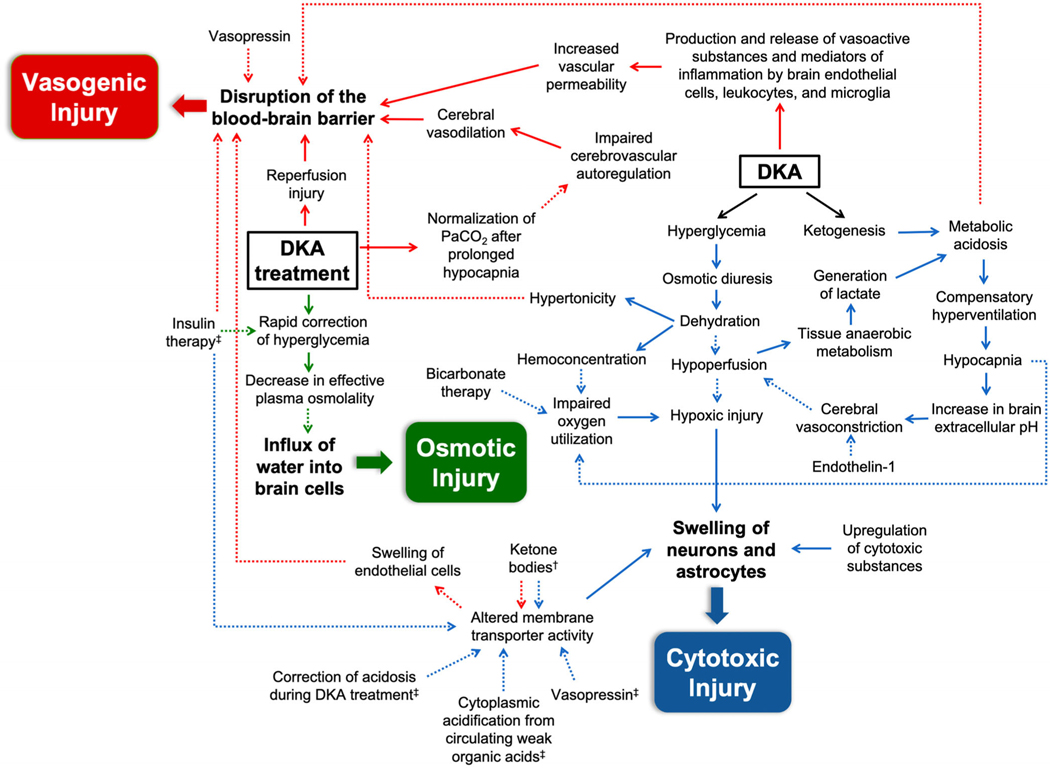FIGURE 1.
A hypothetical schema of the pathways that contribute to the development of cerebral injury in children with diabetic ketoacidosis. Solid arrows indicate pathophysiologic mechanisms that have been observed in humans. Dashed arrows represent hypothesized mechanisms or those that have only been shown in animal studies. The blue arrows signify factors that lead to cytotoxic injury, including upregulation of cytotoxic substances, altered membrane transporter activity, and hypoxic injury. The red arrows depict mechanisms that predispose towards vasogenic injury, characterized by the disruption of the blood–brain barrier. The green arrows denote treatment-related effects that may cause osmotic injury. A combination of these processes causes cerebral edema in high-risk children. †Factors associated with activation of Na-K-Cl cotransporter in astrocytes and endothelial cells. ‡Factors associated with activation of Na+/H+ exchanger in neurons. Abbreviations: DKA, diabetic ketoacidosis

